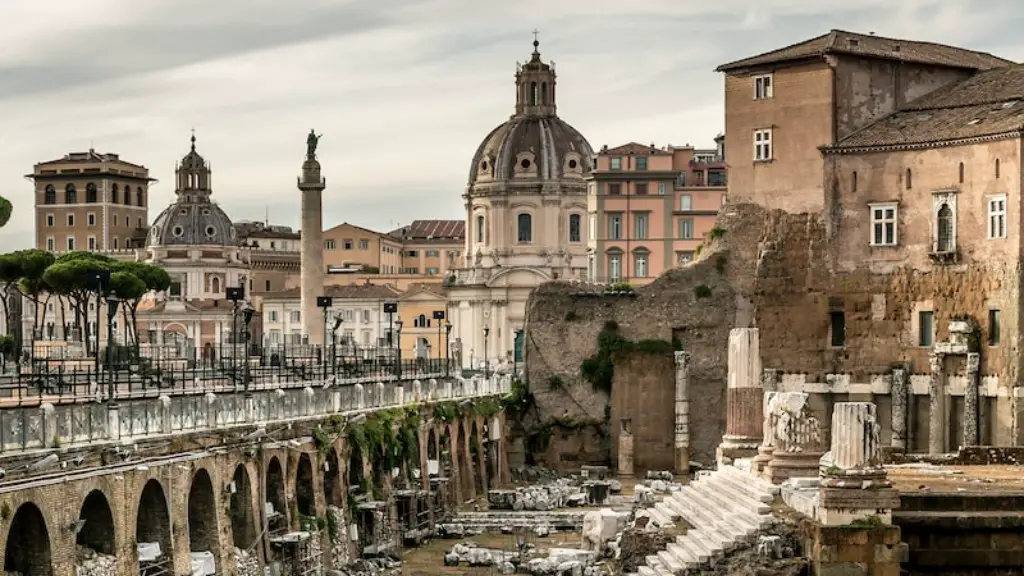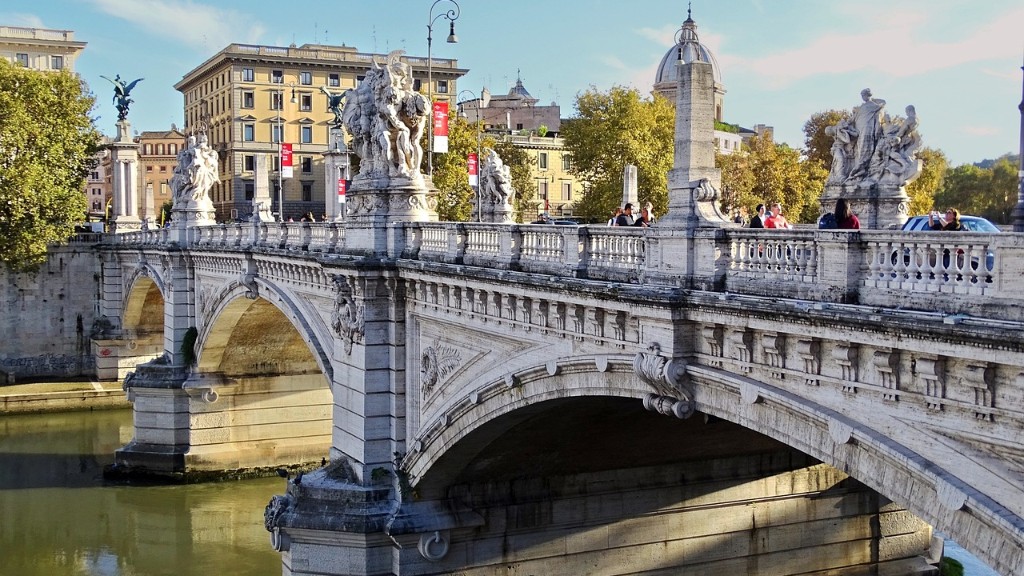The cost of food in ancient Rome varied depending on a number of factors such as time period, region, and economic status. For example, a wealthy Roman would have been able to afford imported and luxury items that were not available to the average citizen. The cost of food also fluctuated based on seasonality and availability. For instance, during times of famine, the price of grain would skyrocket.
In general, however, the cost of food in ancient Rome was quite affordable. staples such as bread and grains were typically less than one denarius per loaf, and even meat was not too expensive, costing around two to three denarii per pound. This meant that even the poorest citizens were able to afford a basic diet. Of course, this diet was not always the most nutritious or varied, but it would have kept them alive.
There is no definitive answer to this question as ancient Rome was a vast and complex empire with a long history. However, we do know that the cost of food varied greatly depending on a number of factors such as location, social status, and time period. Generally speaking, the cost of food was lower in rural areas and higher in urban areas. For the lower classes, the cost of food was a significant portion of their income, while for the upper classes it was a relatively small expense. Finally, the cost of food increased over time as the Roman Empire became more prosperous and developed.
Was food free in Roman Empire?
The grain dole was a way for the government of Rome to provide free or cheap grain for the poor. This was used by politicians to gain popularity with the lower class. The Romans dressed up their meals with various sauces.
The Romans typically ate three meals a day. For breakfast, they would have bread or a wheat pancake with dates and honey. At midday, they would have a light meal consisting of fish, cold meat, bread, and vegetables. And for their evening meal (cena), they would often have leftovers from the previous day.
What would 1 denarius buy
This coin would have been worth a lot to a Roman soldier in 137 BC. It would have bought him enough wheat to make his daily bread for nearly a month, and would have also paid for his accommodation and other needs for three days. This would have been a significant amount of money at the time, and would have helped the soldier to survive and thrive.
The average pay of a laborer in Pompeii was 8 asses per day. This is half a denarius. The actual salaries ranged from 5 to 16 asses per day.
Did Romans only eat once a day?
The Romans generally ate one main meal (the cena) a day, around sunset. Originally this was eaten around midday, preceded by a light meal, often just a piece of bread, early in the morning. This was called ientaculum (or breakfast). Supper or vesperna was a smaller meal in the evening.
Poor people in medieval times typically ate a simple porridge known as puls. This porridge was made from boiled grains such as spelt, millet, or wheat. Sometimes, herbs and vegetables were added to the porridge to make it more filling and tasty.
Why did the Romans only eat one meal a day?
The belief that one meal a day is healthier dates back to the Roman empire. The thinking at the time was that eating more than one meal a day was a form of gluttony and that it would impact negatively on digestion. This belief impacted the way people ate for a very long time.
The Roman Empire was known for its love of food and its willingness to try new things. Meat, fish, and vegetables were all staples of the Roman diet, and as the empire expanded, new flavours and ingredients were introduced. Pepper from India and lemons from Persia were just two of the many new things that the Romans welcomed into their culinary repertoire. This openness to new flavors and ingredients is one of the things that made Roman cuisine so unique and wonderful.
What was the most eaten food in ancient Rome
It is interesting to note that the ancient Romans had a diet that was mainly based on cereals, vegetables, legumes, and cheese. It seems that meat and fish were mainly consumed by the wealthy during this time period. This is likely due to the fact that these items were more expensive and difficult to obtain. It is amazing to think about how different the Roman diet was in comparison to our own today.
Typically, one denarius was considered a fair wage for a day of manual labor. This is reflected in Matthew 20:2 where it says that the workers in the vineyard who agreed to work for one denarius a day were considered to be paid fairly.
How much did a Roman house cost?
The size of the houses during the Roman Empire was immensely large and often adorned with columns, paintings, statues, and other costly works of art. It is said that some of these houses even cost up to two million denarii. The reason for such large and expensive houses was likely due to the status and wealth of the people who could afford them.
Polybius was a Greek historian who wrote in the mid-second century BCE. He estimated that soldiers’ pay was around two obols (a small unit of currency) per day. This would equate to 120 denarii (a larger unit of currency) per year for a infantryman, and 180 denarii per year for a cavalryman. Obviously, the value of the money and its purchasing power was dependent of the economic circumstances of the time.
Who was the wealthiest man in Roman history
Marcus Licinius Crassus was a Roman general and statesman who played a key role in the transformation of the Roman Republic into the Roman Empire. He is often called “the richest man in Rome.” Crassus was a member of the so-called First Triumvirate, along with Julius Caesar and Pompey, which was formed in 60 BC. Crassus was a skilled military commander and was responsible for defeating the rebel Spartacus and putting down the Slave Revolt in Italy. He also invaded Parthia, a region of modern-day Iran, in an effort to extend Rome’s power eastward. However, Crassus was defeated and killed by the Parthians at the Battle of Carrhae in 53 BC.
The price of an enslaved person in ancient Rome varied considerably depending on the sex, age, and skills of the individual. Based on literary and documentary sources, the average price for an unskilled or moderately skilled enslaved person in the first three centuries AD was about 2,000 sesterces.
How long did Romans live on average?
Longevity has increased steadily through history. Life expectancy at birth was a brief 25 years during the Roman Empire, it reached 33 years by the Middle Ages, and raised up to 55 years in the early 1900s. In the past century, longevity has accelerated even more, with life expectancy in developed countries now approaching 80 years. This increase in life expectancy is largely due to improvements in public health and medical care.
Morbid obesity, considered a modern “epidemic”, also occurred naturally in ancient Rome. Galen, a Roman physician of Greek origin from the 2nd century CE, undertook the treatment of obesity. He classified overweight people as obese (Greek pachis), overweight (Greek efsarkos) and very obese (Greek polysarkos).
Did people starve in Rome
There are various famines recorded in ancient Rome. The first famine was in the year AD 400. This was caused by the sack of Rome by Alaric I. The second famine was in 800 AD. This was caused by the fall of the Western Roman Empire. The third famine was in the year 1000 AD. This was caused by the collapse of the agricultural system in the Eastern Roman Empire.
The Roman diet was fairly simple, relying mostly on cereals and legumes. They would typically eat these with sides of vegetables, cheese, or meat, and cover them with sauces made out of fermented fish, vinegar, honey, and various herbs and spices. While they had some refrigeration, much of their diet depended on which foods were locally and seasonally available. This meant that their diet varied depending on where they lived and what time of year it was.
Warp Up
There is no definitive answer to this question as ancient Rome was a large and diverse empire with a wide variety of food costs depending on a number of factors such as location, time period, and social class. However, some estimates put the average cost of basic foodstuffs in Rome during the 1st century AD at around 1-2 sesterces per day per person, which would be the equivalent of $4-8 USD in today’s money.
Based on the available evidence, it is difficult to say exactly how much food cost in ancient Rome. However, we know that the cost of food varied depending on the type of food and where it was purchased. For example, luxury items like oysters and saffron were expensive, while staples like bread and flour were relatively cheap.





